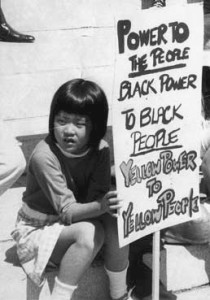Asian Pacific American Heritage Month
By Neel Saxena, Executive Director
Photos: Various Sources
As the month of May comes to a close we mark the end of Asian Pacific American Heritage Month. We continue the journey of a collective identity that began in the 1960s. As we celebrate the diversity of a unified APA identity, we continued to be mired in the monolithic perspective of APAs that ignores our individuality, particularly for our youth. APA youth voices have played a significant role in shaping APA history and at Asian American LEAD, we strive to listen to and hear from youth voices through inclusion and providing spaces where youth can safely express themselves.
The APA movement for social justice finds its roots during the 1960s and 1970s, when diverse communities with different histories were inspired by the African American civil rights movement. The APA movement was led by student activists energized by anti-Vietnam war and black power movements. “This idea of Asian America didn’t exist until 1968, and it’s really the work of people in their 20s, even teenagers, coming together and producing culture, making institutions, working on campaigns, that defined this identity,” said Ryan Wong of the Chinese American Museum.
The efforts of these young people was to change social and political attitudes in the United States and distance themselves from “oriental”. They advocated along with other communities of color for ethnic studies, a movement that was focused at the collegiate level. In 1968 and ’69, San Francisco State University and University of California, Berkeley participated in strikes for the development of ethnic studies. Today, SF State offers more than 175 courses and Asian American studies has popped up across numerous campuses. However, in K-12 education, Asian American history is overlooked.
Recently, Ellen, from AALEAD’s DC Middle & High School Program, participated in panel for young women of color and was asked how you would change the world for young women of color. Ellen responded, “give everyone the chance to say their own history…through studying your own history, find yourself”. The strides made at the collegiate level have yet to fully filter down to K-12 education. At AALEAD youth are provide opportunities to explore their histories through food, workshops, and experiential learning, which are not available in their schools.
I believe APA Youth, like those at AALEAD, will follow in the footsteps of the youth of the 1960s and 70s and bring APA studies to our local schools. In fact youth in Portland, OR and in a handful of jurisdictions have and are advocating for ethnic studies. They argue, “that that ethnic studies classes can help increase self-esteem of students of color, develop critical consciousness, and combat racism … and youth i
n these classes raise their grade point averages, reduce their unexcused absences, and graduate at higher rates.”1
“Unless we know ourselves and our history, and other people and their history, there is really no way that we can really have [the] positive kind of interaction where there is real understanding.”
-Yuri Kockiyama
1(http://www.nbcnews.com/news/asian-america/students-call-ethnic-studies-portland-high-schools-n458696)



